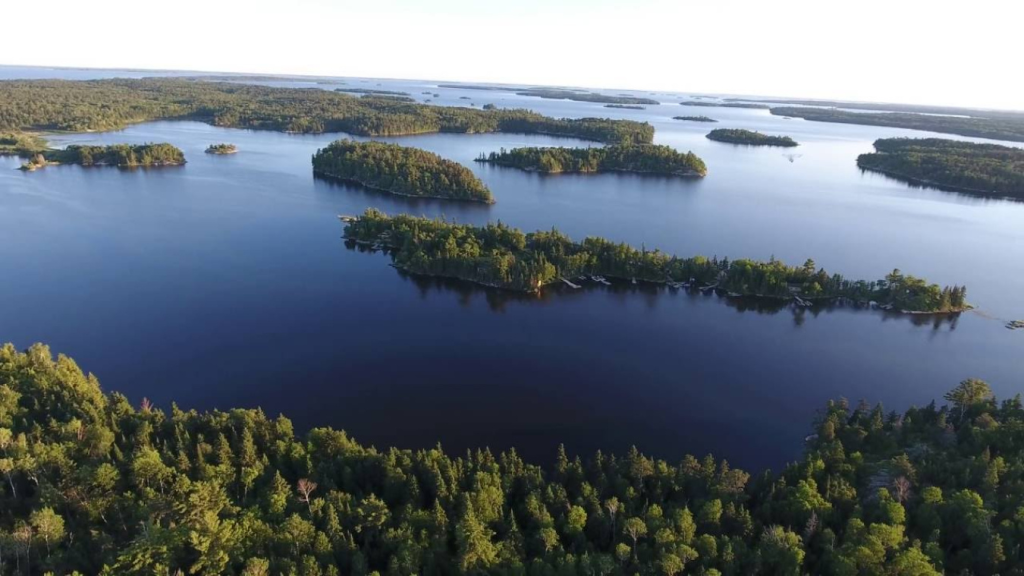The U.S. Department of Energy (DOE) has announced five significant awards for projects in Alaska under the Energy Improvements in Rural or Remote Areas (ERA) program, marking a major step toward sustainable energy solutions for small, remote communities. Funded by the $1 billion Bipartisan Infrastructure Law, ERA targets communities with populations of 10,000 or fewer, enhancing energy resilience, affordability, and reliability while promoting clean energy innovation across rural America.
“The Arctic Energy Office is thrilled to see these projects supported through the competitive ERA program,” said Erin Whitney, Director of the Arctic Energy Office. “This funding—up to $36.02 million across all award phases—reflects the exceptional quality of applications from Alaska and underscores the pressing need for infrastructure and clean energy support in our state.”
Read More: Empowering Tripura: 9,250 Remote Homes Set to Shine with Revolutionary Solar Microgrids
Supporting Tribal and Rural Communities
The latest awards include Cooperative Agreement and Grant Funding recipients, including the Alutiiq Tribe of Old Harbor, Tanana Chiefs Conference, Native Village of Ouzinkie, and Kokhanok Village Council. Each project exemplifies community-driven solutions designed to address energy challenges unique to Alaska’s remote villages, many of which rely heavily on diesel fuel for electricity.
Old Harbor Hydroelectric Project
The Alutiiq Tribe of Old Harbor received a $1.5 million phase-one award, with a potential federal cost share of up to $10 million across all project phases, for the Old Harbor Hydroelectric Project. This run-of-the-river hydroelectric facility on Kodiak Island is designed to generate approximately 3,470 MWh annually, offsetting 95% of diesel consumption at the local power plant.
Old Harbor, a remote Alutiiq Tribal village located 50 air miles from Kodiak, has around 200 residents, 83% of whom are Native Alaskans. The majority live below the federal poverty line. The hydroelectric project will provide year-round, reliable energy, directly reduce household energy costs, and serve as a replicable tribal ownership model for other Alaskan villages.
Through a comprehensive Community Benefits Plan, the Alutiiq Tribe will allocate 100% of financial benefits to residents via subsidies for water, sewer, and electricity, while improving access to clean water and reducing the negative health impacts associated with diesel use.
Alaskan Tribal Energy Sovereignty Initiative

The Tanana Chiefs Conference received a $4.1 million phase-one award, potentially reaching $26 million in total federal cost share, to deploy high-penetration solar PV and battery storage systems across eight remote tribal communities in interior Alaska, including Nulato, Huslia, Minto, and Kaltag.
These communities rely entirely on diesel for electricity, accessible only by plane or boat, resulting in energy costs four times the national average. By modernizing microgrids, this initiative will offset 40% of diesel consumption, enhance reliability, lower energy costs, and reduce greenhouse gas emissions.
The project also focuses on tribal energy sovereignty, job training, and developing Alaska’s largest tribally owned Independent Power Producer. Community engagement will be fostered via social media, radio announcements, websites, and community meetings, ensuring local voices guide implementation.
ERA Grant Funding Awards
Ouzinkie Independent Power Energy Improvement Project
The Native Village of Ouzinkie received a $2.3 million award for a 160 kW solar PV array coupled with a 210 kWh battery storage system. Located on Spruce Island, the 128-resident community depends on subsistence fishing, hunting, and gathering. Reliable electricity and modern refrigeration are crucial to preserve resources, particularly during seasonal lows.

The system will reduce diesel use, lower air and noise pollution, and provide backup power during outages. Benefits include resilient, sustainable electricity, decreased reliance on diesel, and workforce development through apprenticeship programs, scholarships, and post-secondary education opportunities.
Kokhanok Village – Big Battery as Energy Backbone
The Kokhanok Village Council received a $5 million award for a transformative project integrating a 1 MW battery storage system, 100 kW solar PV, a 100 kW wind turbine, and electric thermal storage (ETS) heating units. This microgrid upgrade aims to displace 70% of diesel consumption within the first two years while preparing for future population growth and increased energy demands from electric vehicles and heat pumps.

Beyond clean energy, the project will reduce electricity costs, improve air quality, and enhance resilience. ETS heating units installed in ten elder residents’ homes are projected to reduce annual heating expenses by $850–$1,000 per household. The project also demonstrates a scalable microgrid model that can be replicated across other islanded communities in Alaska.
Tanacross Solar PV and Tok Battery Energy Storage System
The Tanana Chiefs Conference received a $5 million award for upgrades at the Alaska Power & Telephone (AP&T) power plant in Tok, Alaska. The project incorporates 1.5 MW of solar PV and a 1.5 MWh battery storage system, providing cleaner electricity to federally recognized tribes in Tanacross, Tetlin, and Dot Lake.
This initiative will displace over 125,000 gallons of diesel, improve air quality, reduce noise pollution, and lower energy costs for residents. The system is designed for future renewable expansion, supports local construction and maintenance employment, and generates annual revenue to cover operations while creating a reserve fund for future upgrades.
The Bigger Picture: Energy Resilience and Community Impact
These projects collectively advance Alaska’s energy independence, mitigate reliance on imported diesel, and promote sustainable, clean energy solutions tailored to each community’s cultural and geographic needs. By investing in renewable energy infrastructure, DOE’s ERA program strengthens rural resilience, reduces greenhouse gas emissions, and fosters local economic development.
From hydroelectric power in Kodiak to solar, wind, and battery microgrids across interior Alaska, each initiative underscores the importance of community-driven energy projects that deliver measurable benefits while building long-term capacity. By improving grid reliability, reducing energy costs, and creating workforce development opportunities, these projects exemplify the potential for transformative energy solutions in remote communities.
Future Prospects
As Alaska continues to implement these ERA-funded projects, the lessons learned will inform broader applications in rural America. Demonstrating tribal energy sovereignty, scalable microgrid design, and effective community engagement models, these initiatives provide a blueprint for clean, reliable, and equitable energy access nationwide.
With ongoing funding, technical support, and local collaboration, Alaska’s remote villages are on track to achieve resilient, low-carbon energy systems, setting a national standard for how federal investment can empower communities, protect the environment, and foster economic growth.
Frequently Asked Questions:
What is the DOE ERA program?
The Energy Improvements in Rural or Remote Areas (ERA) program, funded by the Bipartisan Infrastructure Law, supports clean energy projects in communities with fewer than 10,000 residents. Its goal is to improve energy reliability, affordability, and resilience in rural America.
How much funding did DOE provide for Alaska projects?
DOE awarded up to $36.02 million for five projects in Alaska, including Cooperative Agreement and Grant Funding awards for rural and tribal communities.
Which communities in Alaska are receiving funding?
The projects benefit communities including Old Harbor, Ouzinkie, Kokhanok, Tok, and eight interior tribal villages served by the Tanana Chiefs Conference.
What types of energy projects are being implemented?
Projects include run-of-the-river hydroelectric facilities, solar PV arrays, battery energy storage systems, wind turbines, and microgrid upgrades to reduce reliance on diesel and increase renewable energy use.
How will these projects benefit residents?
Benefits include reliable, year-round electricity, lower energy costs, reduced diesel dependency, improved air quality, and workforce development opportunities for local residents.
What is the expected impact on diesel consumption?
Projects are projected to displace up to 70% of diesel use in certain villages, reducing greenhouse gas emissions and lowering energy costs.
How do these projects support tribal energy sovereignty?
Projects enable tribes to own and operate renewable energy infrastructure, making communities less dependent on imported fuels and increasing control over local energy systems.
Conclusion
The DOE’s recent awards to Alaska’s rural and tribal communities demonstrate a bold commitment to clean, reliable, and resilient energy solutions. By investing in hydroelectric, solar, wind, and battery storage projects, these initiatives reduce diesel dependence, lower energy costs, and enhance community health and well-being. Beyond infrastructure, the projects empower tribal communities to exercise energy sovereignty, build local workforce capacity, and create scalable models for other remote regions. Together, these transformative projects are not only advancing Alaska’s energy future but also setting a national standard for sustainable and equitable rural energy development.


